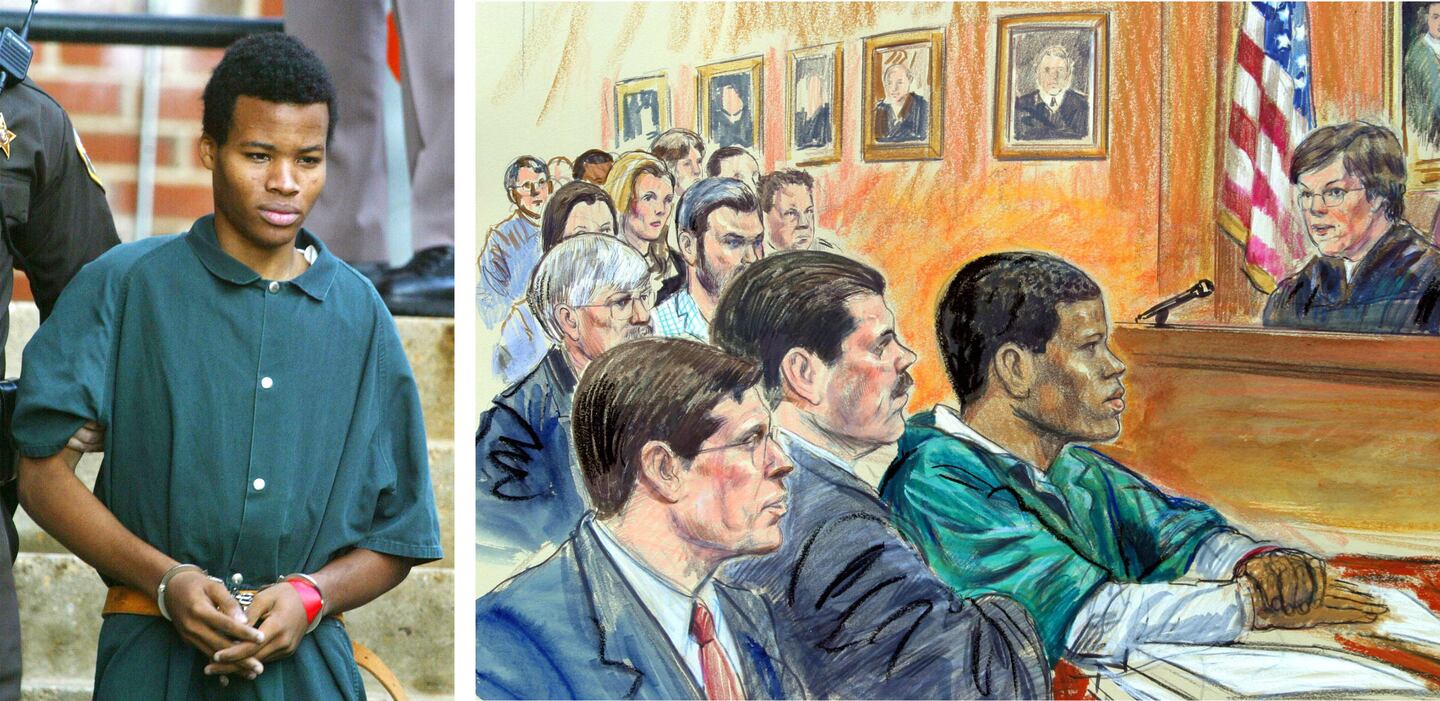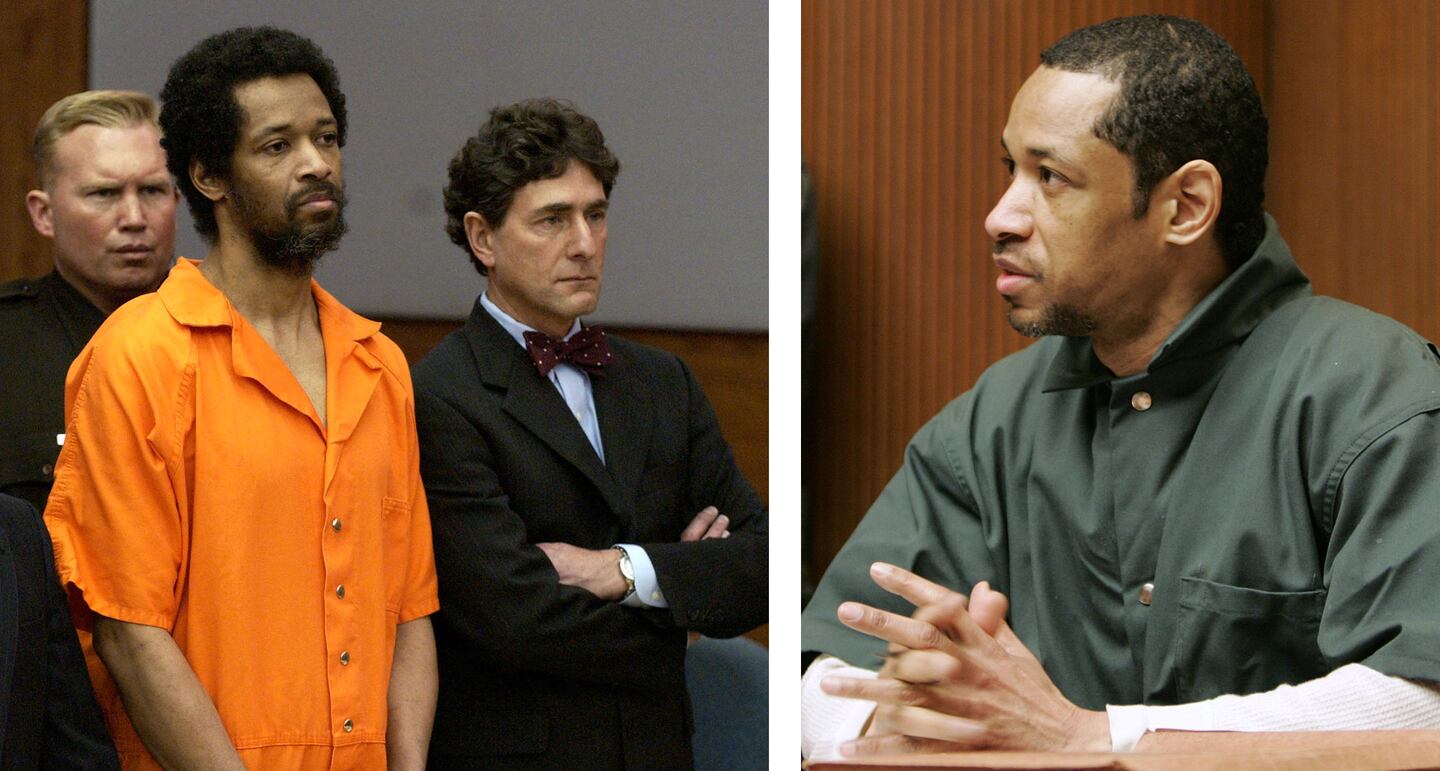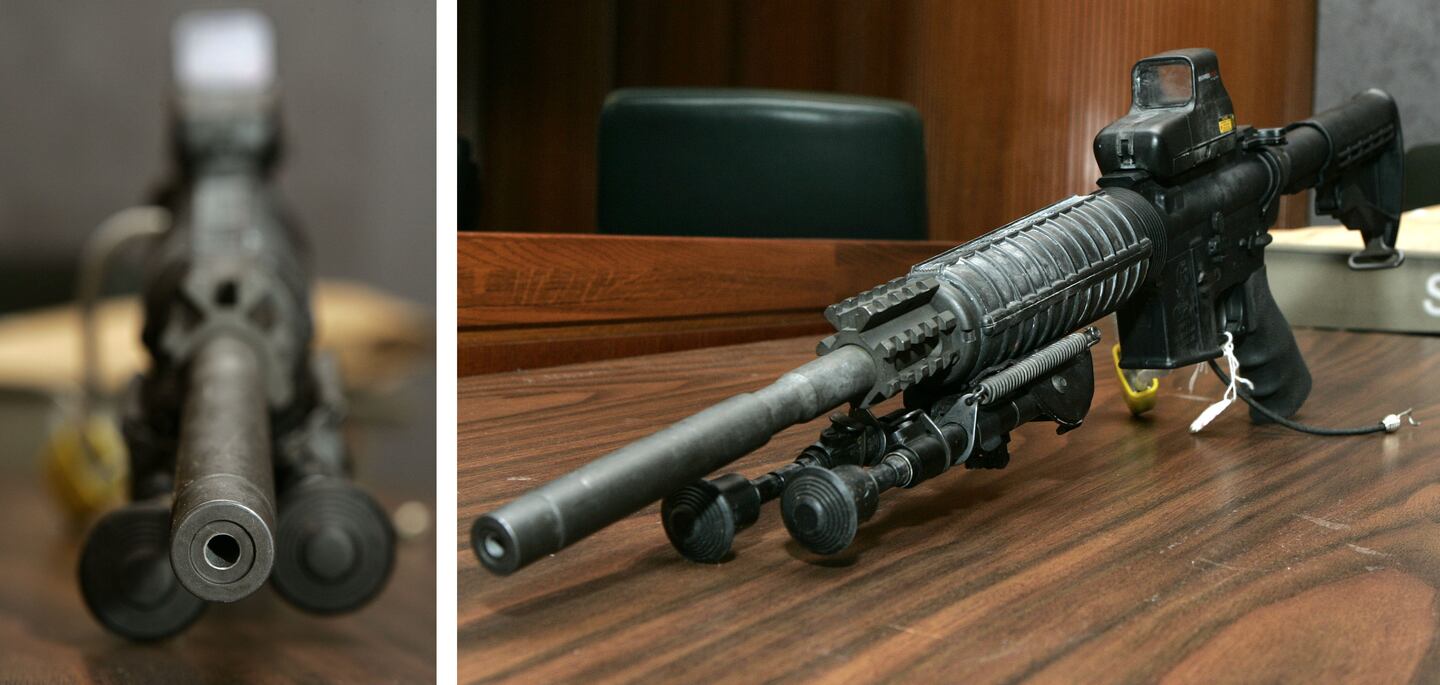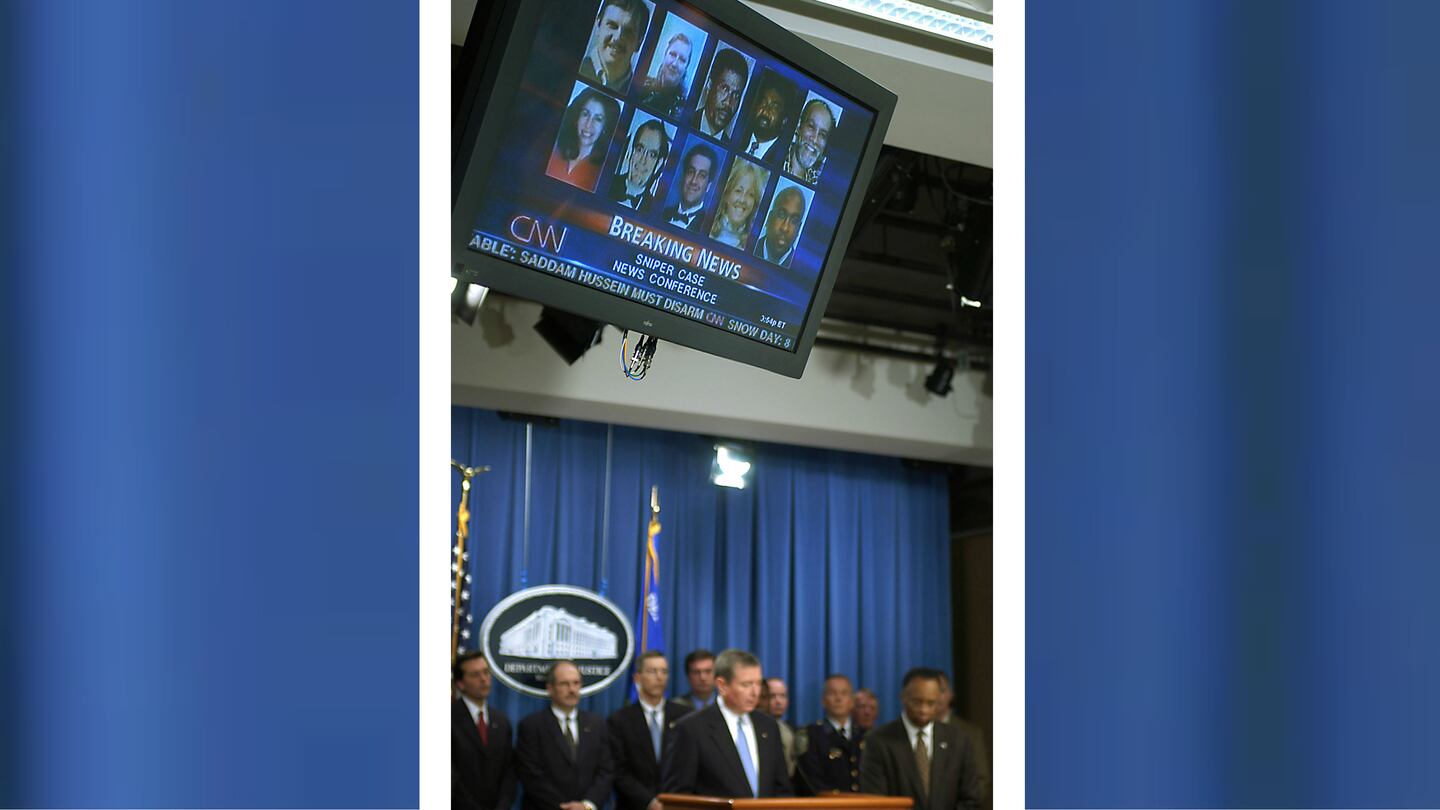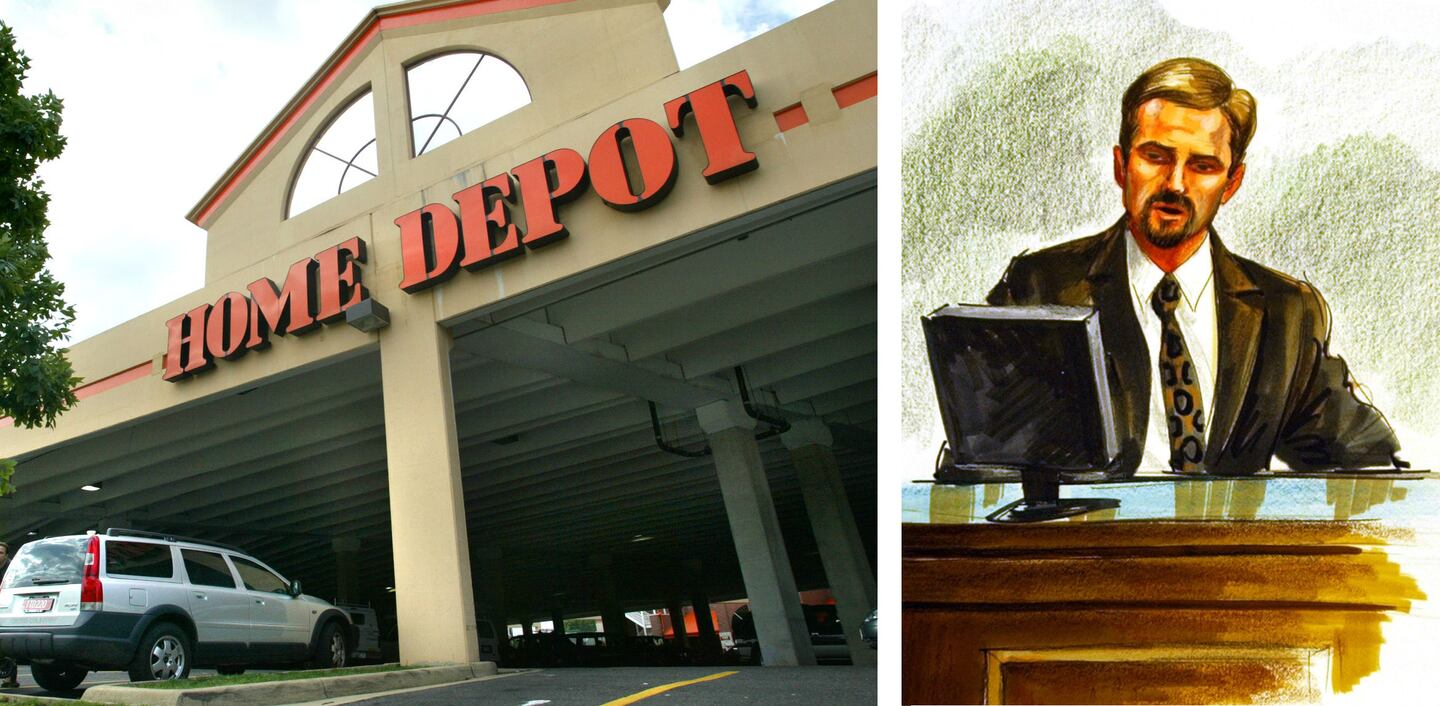WASHINGTON — It has been 17 years since FBI analyst Linda Franklin was gunned down outside a Virginia Home Depot, one of 12 people killed in a sniper-style shooting spree that terrorized residents in Virginia, Maryland and Washington, D.C., for nearly six weeks in 2002.
Lawyers for one of her killers, Lee Boyd Malvo, argued Wednesday before the U.S. Supreme Court that Malvo, who was 17 when the killings took place, should be resentenced for his Virginia crimes. See the Supreme Court case, Mathena v. Malvo, here.
Malvo, now 34, is serving four life sentences without the possibility of parole in Virginia, according to The Associated Press. Virginia Department of Corrections records show he is currently housed at the Red Onion State Prison, a supermax facility in Wise County.
>> Related story: Beltway sniper Lee Boyd Malvo granted new sentencing hearing in Virginia killings
He was sentenced in 2006 to six life sentences, without parole, for the murders that took place in Maryland. Malvo is currently appealing a ruling denying him a new sentencing hearing in the Maryland killings, the AP reported.
Altogether, Malvo and his mentor and co-conspirator in the crimes, John Allen Muhammad, were linked to about two dozen shootings, both fatal and nonfatal, across the country. The pair became known as the D.C. snipers or, alternately, the Beltway snipers, due to the geographic area where most of the crimes to which they were tied took place.
Muhammad, 48, was executed by lethal injection in Virginia in November 2009.
‘A monster'
Malvo told The Washington Post in 2012, 10 years after the shootings, that he was "a monster" when the crimes took place.
"If you look up the definition, that's what a monster is," Malvo said. "I was a ghoul. I was a thief. I stole people's lives. I did someone else's bidding just because they said so.
"There is no rhyme or reason or sense."
Listen to audio of Malvo talking to the Post via telephone interviews here.
Malvo's case is on the Supreme Court's docket this week following a series of appeals by prosecutors. The Virginia Attorney General's Office last year was shot down by the 4th U.S. Circuit Court of Appeals, which upheld a lower court's ruling that Malvo's Virginia sentences must be vacated and reconsidered.
The appeals court ruled that Malvo's sentencing did not abide by the Supreme Court's new rules for sentencing juveniles. The high court in 2012 banned life sentences without the possibility of parole for murder defendants under the age of 18.
The ban was applied retroactively.
"To be clear, the crimes committed by Malvo and John Muhammad were the most heinous, random acts of premeditated violence conceivable, destroying lives and families and terrorizing the entire Washington, D.C. metropolitan area for over six weeks, instilling mortal fear daily in the citizens of that community," U.S. Circuit Judge Paul Niemeyer wrote in last year's ruling. "But Malvo was 17 years old when he committed the murders, and he now has the retroactive benefit of new constitutional rules that treat juveniles differently for sentencing. Because we are bound to apply those constitutional rules, we affirm the district court's grant of habeas relief awarding Malvo new sentencing.
"We make this ruling not with any satisfaction but to sustain the law. As for Malvo, who knows but God how he will bear the future."
Read the entire appeals court ruling in Malvo's favor below.
Lee Boyd Malvo 4th Circuit Court of Appeals Ruling by National Content Desk on Scribd
‘Under the influence of a predator'
Prosecutors argued that Muhammad's ultimate goal in the sniper attacks was to include among his targets his ex-wife, Mildred Muhammad, and regain custody of their children. Witnesses testified during the penalty phase in his Virginia trial that his trajectory toward the shooting rampage began when he lost all custody of the children in September 2001.
The very first shooting to which Malvo and Muhammad were tied was the Feb. 16, 2002, shooting of Keenya Nicole Cooks, 21, who was shot as she opened the door of her aunt's Tacoma, Washington, home. Cooks' aunt, Isa Farrington Nichols, was good friends with Mildred Mohammad and had reportedly encouraged her to file for divorce from her domineering and abusive husband.
Nichols, who later said she believed that bullet was meant for her, wrote earlier this month in a piece published by Newsweek that she supports resentencing for Malvo. Neither he nor Muhammad were ever charged with killing Cook.
"I left on the morning of Saturday the 16th and said I would be back in an hour, not knowing it was the last time I would ever see Keenya alive," Nichols wrote. "A few hours later, a boy knocked on the door and she opened it for him. The boy, 16-year-old (Malvo), shot her point-blank in the face and killed her. Her body was discovered by my then 14-year-old daughter, and our family was changed forever."
Nichols, who said she worked as John Muhammad's accountant for a while and was at the custody hearing in which he lost access to his children, wrote that Malvo killed her niece under the influence of his much older accomplice, who she called a predator.
She argued that Malvo should be resentenced so he, at some point down the road, has a chance to demonstrate if he has truly changed.
"I say this as someone who has suffered unimaginably at Malvo's hands. It's one thing to have a loved one killed, but it is quite another when you are the one intended to receive the bullet," Nichols wrote. "Despite my heartbreak, I recognize that Malvo was acting under the influence of a predator who trained him to kill me."
Now a national speaker on trauma reconciliation, Nichols and other family members of victims in the case, along with some of Malvo's surviving victims, have joined an amicus brief on his behalf in the Supreme Court case.
‘A paroxysm of fear'
According to federal court documents, Muhammad and Malvo's Washington, D.C.-area shooting spree began on Sept. 5, 2002, in Maryland, where Malvo ran up to a Paul LaRuffa's car in Clinton and shot him six times before stealing his laptop and cash. The laptop was later found in Muhammad's car after the duo's capture.
Malvo shot another man 10 days later outside a Clinton liquor store, the appeals court ruling states.
The pair's string of crimes then moved south, where Muhammad used a high-powered, long-range Bushmaster rifle on Sept. 21 to kill Claudine Parker, 52, in Montgomery, Alabama, as she and a coworker closed the liquor store where they worked. The coworker, Kellie Adams, survived but was left with lasting injuries.
Malvo was spotted fleeing the scene. Two days later, Hong Im Ballenger, 45, of Baton Rouge, Louisiana, was shot in the head and killed with a Bushmaster rifle.
Evidence found at the Montgomery crime scene -- Malvo's fingerprint on the page of a discarded magazine -- would later lead to the pair's identities and subsequent arrests.
Before their eventual capture, however, the bloodshed continued.
"Muhammad and Malvo returned to the Washington, D.C., area and, from Oct. 2 until their capture on Oct. 24, embarked on a series of indiscriminate sniper shootings with the Bushmaster rifle that left 10 more people dead, three seriously wounded and the entire region ‘gripped by a paroxysm of fear,' convinced that ‘every man, woman, and child was a likely target,'" last year's appeals court ruling states.
They killed a man outside a grocery store Oct. 2 in Montgomery County, Maryland. The following day, they killed five more -- four that morning in Montgomery County and a fifth that night in Washington, D.C.
They killed a man Oct. 9 as he pumped gas in Prince William County, Virginia, and a second man was killed outside a gas station two days later in Spotsylvania County.
The shocking crimes had people terrified. Patrons hurried through parking lots to avoid becoming targets and people hid behind tarps at gas stations as they filled their tanks with fuel.
Franklin, a 44-year-old breast cancer survivor, was killed Oct. 14 as she and her husband loaded their purchases into their red sports car outside a Home Depot. According to media reports during Muhammad's 2003 trial in the Virginia killings, the couple was having trouble getting their purchases into the small car.
The Baltimore Sun reported that Franklin's husband, William Franklin, testified that they were trying to get a 6-foot-long shelf into the car when his wife was shot through the head.
"I said, 'Why don't we switch places?'" Franklin testified. "When I was trying to put the shelf in the car, I heard a loud noise, like a piece of wood smacking concrete.
"I felt something hit me on the side of the face. I didn't know at the time, but afterward, I found out it was her blood."
Malvo confessed to shooting Franklin, but prosecutors argued that it was instead Muhammad who fired the rifle from a nearby hilltop as Malvo watched with binoculars from Muhammad's blue 1990 Chevrolet Caprice.
Several of the shootings were committed from a makeshift sniper's nest Muhammad had built in the trunk of the car. A hole had been cut into the trunk lid, just above the license plate, through which the rifle barrel could be extended.
The rear seat of the car was also altered to allow access to the trunk, where a gunman could lie down in a sniper's position.
Court records show the shootings continued after Franklin's murder, with the last fatal shooting taking place Oct. 22, two days before the gunmen were captured. Bus driver Conrad Johnson, 35, was shot as he stood on the steps of his bus in Aspen Hill, Maryland. He later died of his injuries.
Muhammad and Malvo were caught two days after Johnson's shooting as they slept in the Caprice, which had been spotted by witnesses near multiple crime scenes, at a Frederick County, Maryland, rest stop. The loaded rifle was found in the car with them, court records say.
‘He could not have chosen a better child'
After his arrest, Malvo told detectives he and Muhammad, his "father," had committed the crimes to extort $10 million from the "media and the government," court documents say. The teen claimed he had pulled the trigger in 10 of the shootings.
He also took credit for most of the shootings at Muhammad's Virginia trial, but at Muhammad's Maryland trial, Malvo testified that he had shot Johnson, as well as a 13-year-old boy who survived being shot Oct. 7, 2002, outside his Prince George's County middle school, but that Muhammad had pulled the trigger on the rest.
At his own trial in November and December 2003, Malvo's defense team asserted an insanity defense "based on the theory that he had been indoctrinated by Muhammad during his adolescence and was operating under Muhammad's control," the appeals court ruling states.
More than 40 witnesses testified about Malvo's troubled upbringing, during which he was "physically abused and largely abandoned" while growing up in Jamaica and Antigua. At age 14 or 15, Malvo met Muhammad, a U.S. Army veteran who had taken his children to live in Antigua without their mother's knowledge.
Jurors at Malvo's trial heard "how Muhammad became a surrogate father for Malvo and brought him illegally to the United States in May 2001; how Malvo briefly reunited with his mother in the United States but then moved across the country in October 2001 to rejoin Muhammad, who had recently lost custody of his children," court records show.
Malvo said in his 2012 interview with the Post that his indoctrination at Muhammad's hands began early on.
"The groundwork was laid in Antigua because I leaned on him, I trusted him," Malvo said in the interview. "I was unable to distinguish between Muhammad the father I had wanted and Muhammad the nervous wreck that was just falling to pieces. He understood exactly how to motivate me by giving approval or denying approval. It's very subtle. It wasn't violent at all. It's like what a pimp does to a woman."
Malvo told the newspaper Muhammad chose him because he "knew he could mold" him.
"He knew I could be what he needed me to be," Malvo said. "He could not have chosen a better child."
Jurors at Malvo's trial also heard how Muhammad spent almost a year training the boy in military tactics.
He told Malvo "that he had a plan to get his children back and force America to reckon with its social injustices," the appeals court ruling states.
Mildred Muhammad testified at her ex-husband's sentencing hearing of the times he threatened to kill her. As their marriage crumbled in 2000, he took her into the garage of her home in Washington state.
"(He said), 'Just know this: You have become my enemy and as my enemy, I will kill you,'" Mildred Muhammad testified, according to the Sun.
It was shortly after that when John Muhammad took the children under fake names to Antigua. Mildred Muhammad took him to court and regained custody of the children after he brought them back to the United States in August 2001.
Mildred Muhammad, who has since become an anti-domestic violence advocate and public speaker, told an audience last fall that her ex-husband blamed her for his crimes, the Free Lance-Star in Fredericksburg, Virginia, reported.
"The detectives asked him, why did he do it, and he told them, 'It was Mildred's fault,' Everything was my fault," she said, according to the newspaper. "I can't be held accountable for someone else's actions."
Since his imprisonment, Malvo has taken responsibility for the things he has done. He told the Post in his interview seven years ago that he recalls each crime in detail, but that the image that sticks with him most is the devastation he saw in the eyes of Linda Franklin's grieving husband.
"It is the worst sort of pain I have ever seen in my life," Malvo said in the Post interview. "His eyes. Words do not possess the depth in which to fully convey that emotion and what I felt when I saw it. You feel like the worst piece of scum on the planet."
Cox Media Group

